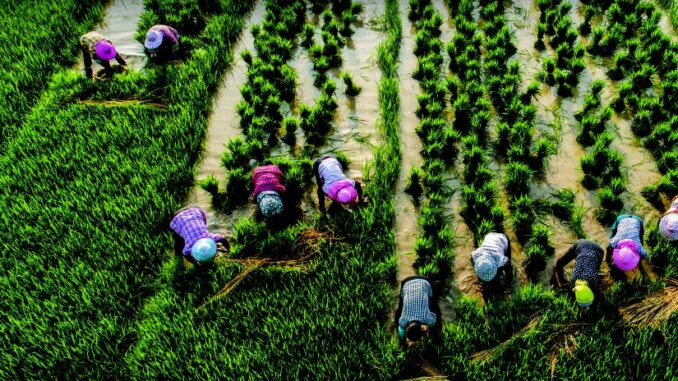
今天早上一打开手机,铺天盖地是多年生水稻品种入选 Science 的新闻,对于不怎么喜欢读二手新闻的小司机来说当然要读原文了。顺便做个广告:小司机会员有提供 Science 杂志。
中文摘要:
2022年11月,中国云南大学胡凤益团队联合国内外相关团队在国际知名学术期刊《自然·可持续性》发表了题为“多年生稻的可持续生产力与生产潜力”的研究论文,并同步发表了题为“多年生稻变革促进可持续农业”的研究简报。
该团队多年生稻23(PR23),种植一次可连续免耕收获3—4年,即自第二季起便无需买种、育秧、犁田和移栽等生产环节,仅需田间管理和收获两个生产环节,节约生产成本,减少劳动力,是基于种间杂交培育多年生粮食作物领域的里程碑事件。
以下是 Science 杂志2022年12月16日关于此篇报道的全文(P27)
原文下载:Science-20221216.pdf: https://url48.ctfile.com/f/5062648-749697357-e6850e?p=514467 (访问密码:514467)
The world’s major food crops—rice, wheat, corn—must be planted anew(重新) for every harvest. That’s a lot of work for farmers and can contribute to environmental problems such as soil erosion. Perennial grains that survive and produce year after year could ease the burden, but breeding plants that are long-lived and productive enough has been a challenge. This year, researchers in China showed perennial rice can meet those benchmarks and save farmers many weeks of backbreaking labor.
Called Perennial Rice 23 (PR23), the variety was created years ago by crossing a commercial variety of Asian rice with a perennial wild rice that grows in Africa. Improving its yield(产量) and quality took more than 2 decades. Finally, in 2018, researchers at Yunnan University and other institutions released PR23 to farmers in China, enlisting them in a large-scale experiment to find out how many times the rice can be harvested and measure the yield and other benefits.
PR23 yielded just as much grain as regular, seasonally planted rice, the team reported last month in Nature Sustainability(持续性). In the first year, planting and cultivation cost about the same. But in the second year, farmers could eliminate a major task: transplanting young rice seedlings into a paddy(稻田), grueling(艰辛的) work often done by women and children. Skipping this step, thanks to the perennial rice, reduced the amount of work per hectare(公顷) by as much as 77 person-days each season, and helped lower farmers’ costs by half. Soil nutrients also increased in the fields containing perennial rice. By the fifth year, however, yields dropped so much the perennial rice needed to be replanted.
More and more farmers are cultivating PR23, thanks to technical assistance from Yunnan University and government promotion. More than 15,000 hectares were planted in southern China last year, a fourfold(四倍的) increase from 2020. PR23 and similar varieties are being tested in Africa as well. Perennial rice could also reduce soil erosion in the terraced uplands of Southeast Asia. But plant breeders still need to develop a strain adapted to that environment’s drier and less fertile soil. Researchers also worry about long-term impacts. One concern is that weeds and pathogens will accumulate in the unplowed fields, requiring more herbicide(除草剂) than conventional rice does. Another question is whether the rice emits more nitrous(氮) oxide—a potent greenhouse gas. But as cultivation spreads, the costs and benefits of perennial rice should come into focus. —Erik Stokstad
本站没有存储任何书籍、杂志和报纸。
页面内容只做展示和推荐。如果您喜欢本期内容请购买正版。
This site does not store any books, magazines or newspapers.
The contents of the pages are for display and recommendation only.
If you like the content of this issue please purchase the original.